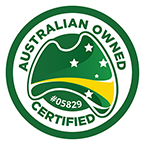Business owners have legal and ethical responsibility to keep their employees safe. One way of doing this is keeping them protected from fire incidents. Maintaining comprehensive fire safety measures ensure that every employee and customer has the chance to safely exit the building if a fire does break out.
Furthermore, all buildings have annual fire compliance obligations under the Building Fire Safety Regulation 2008. According to this regulation, all buildings classified as class 1B to 9 must meet the requirements stipulated; only stand-alone houses and townhouses are exempt. All classes of buildings are specified in the Building Code of Australia.
As mentioned earlier, the purpose of this legislation is to ensure that every person inside the building can evacuate the building safely and quickly in the case of an emergency. This also ensures that the prescribed fire safety installations for the building are maintained.
The Building Fire Safety Regulation 2008 requires all Bodies Corporate to ensure that the following are met annually:
- Maintain all prescribed Fire Safety Installations (FSI)
- Complete an occupier’s statement annually
- Check defined evacuation route(s) are clear and safe and document it
- Review the fire and safety evacuation plan annually
- Appoint and re-train your Responsible Persons annually and keep records of this
- Have an evacuation practice at least annually
All of these must be completed and essential documents and records must be kept as evidence of compliance.
Failure to comply could cause fines and penalties ranging from $8,250 for every single offence, and up to $165,000 and three years in jail for an offence that leads to a fire causing multiple fatalities.
Prescribed Fire Installations include the following equipment:
- Fire extinguishers, hydrants and fire hoses;
- Exit and other signs;
- Fire sprinkler systems;
- Smoke alarms and fire alarms;
- Automatic fire pressurisation systems (often used in high rise fire escapes);
- Fire control rooms and panels;
- Automatic smoke exhaust and ventilation systems;
- Occupant warning system (public address and alarm system)
These make up the Fire Safety Installations in the building. To guarantee their integrity, a fire safety inspection must be conducted regularly to ensure that they are maintained in relevance to the Code or Standard.
Defining evacuation routes and keeping them clear and safe is part of the Building Fire Safety Regulation 2008. These routes must be free from obstructions at all times. Also, locks and handles on any doors on the evacuation route must be compliant. Fire safety measures must be done to secure that the evacuation routes are isolated from fire.
The Fire and Evacuation Plan and diagrams of the building must indicate the escape routes. These paths of egress must be reviewed and inspected at least once a year.
In the event of a fire outbreak, persons inside the building only have one to two minutes from the time the alarm is set off to when their life is seriously at threat by smoke or fire. Small concentrations of carbon monoxide from the smoke when inhaled could leave the person unconscious and may lead to death in under three minutes.
With this regard, it is crucial that the building has a Fire and Evacuation Plan to help guarantee the safe, orderly, and rapid escape of the occupants. A Fire and Evacuation Plan includes evacuation diagrams placed visibly on walls in the buildings. It also indicates the Evacuation Coordination Procedures.
A person responsible for carrying out or leading the evacuation coordination procedures must be appointed. All buildings, except for Class 1a, are required to have an appointed person. This individual is commonly called the Chief Fire Warden. Fire Wardens, Floor Wardens and/or Deputy Wardens assist the Chief Fire Warden to carry out the responsibility of evacuating the occupants safely.
A risk analysis of the building determines the number of people required to carry out the Fire and Evacuation Plan. The number of responsible or appointed persons must be enough to ensure that their duties may be conducted as effectively and efficiently as possible.
Fire and Emergency Drills must be conducted at least once a year. Practicing the evacuation procedures fortifies the effectiveness of the fire evacuation plan and procedure. When conducting a fire and emergency drill, it is ideal that most of the occupants of the building are present.
The building or business owner must secure an annual occupier’s statement. This statement declares that all Fire Safety Installations are installed appropriately and maintained by qualified people in compliance with the QDC, AS 1851 or other appropriate Australian Standard or recommendation. A copy of the statement is sent to the fire commissioner within 10 days of the date the statement is required.
For more information with regard to fire safety compliance, contact FCF Mackay. We offer a wide range of services including supply, installation and routine maintenance of fire protection equipment.


